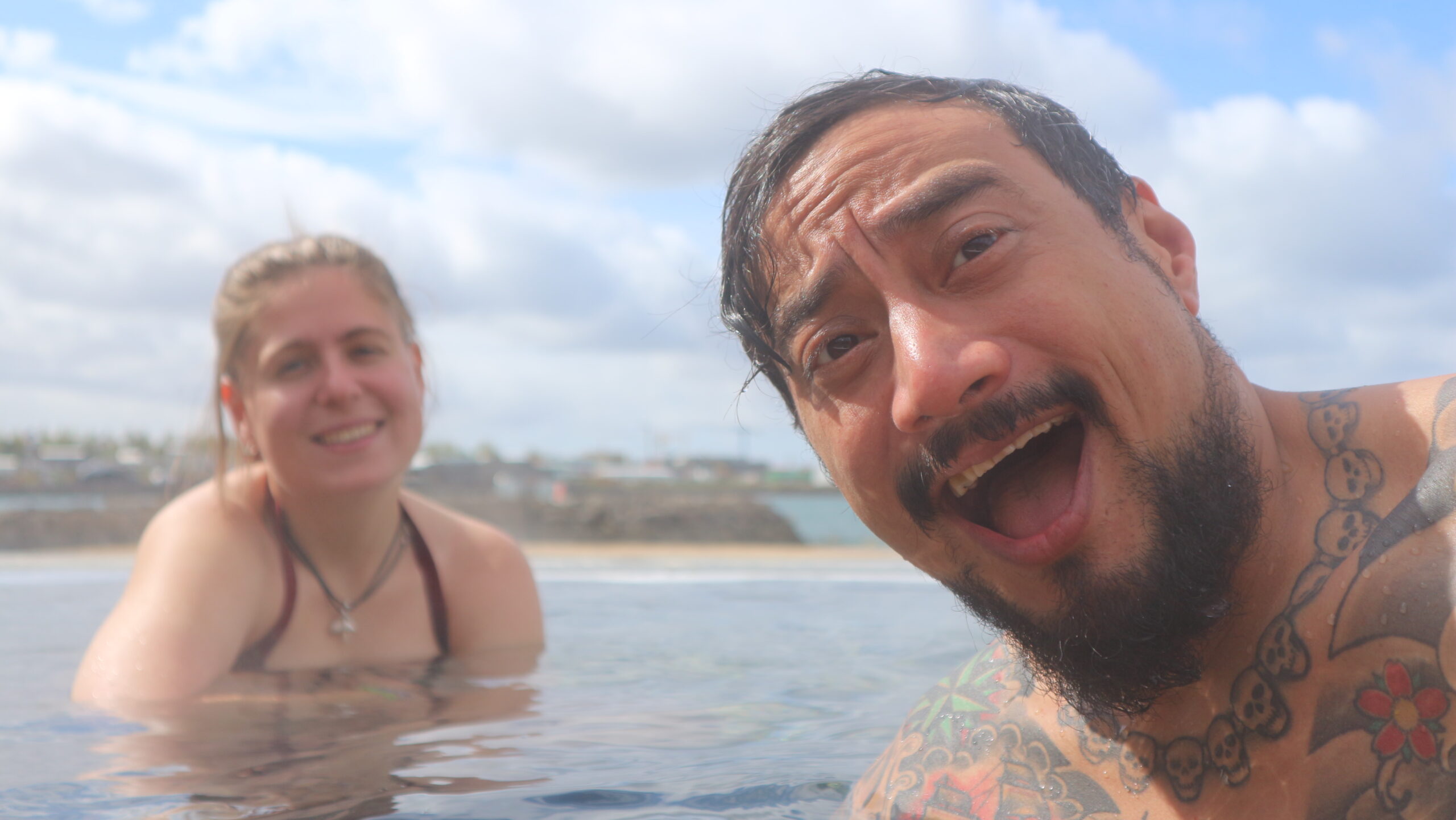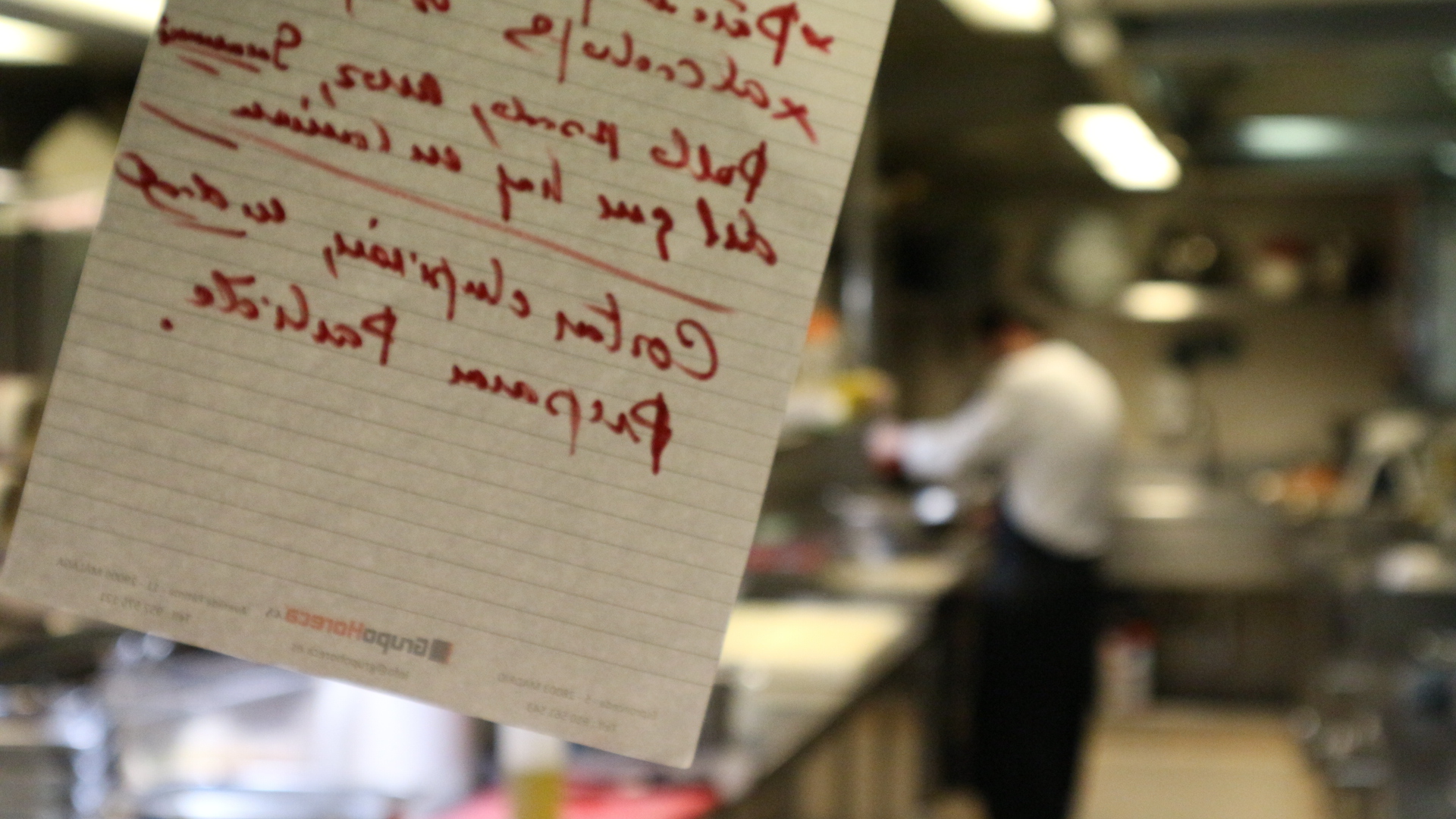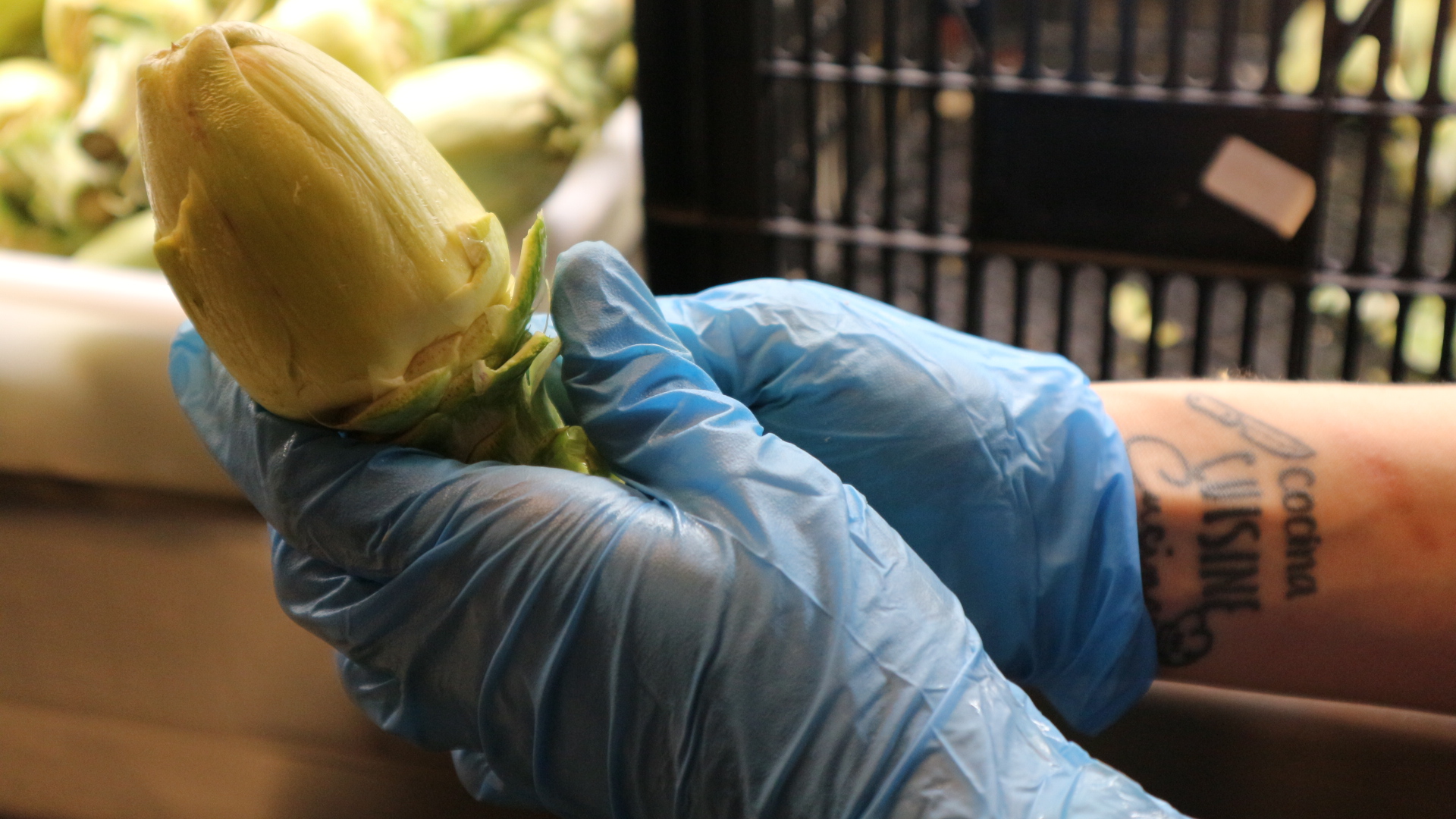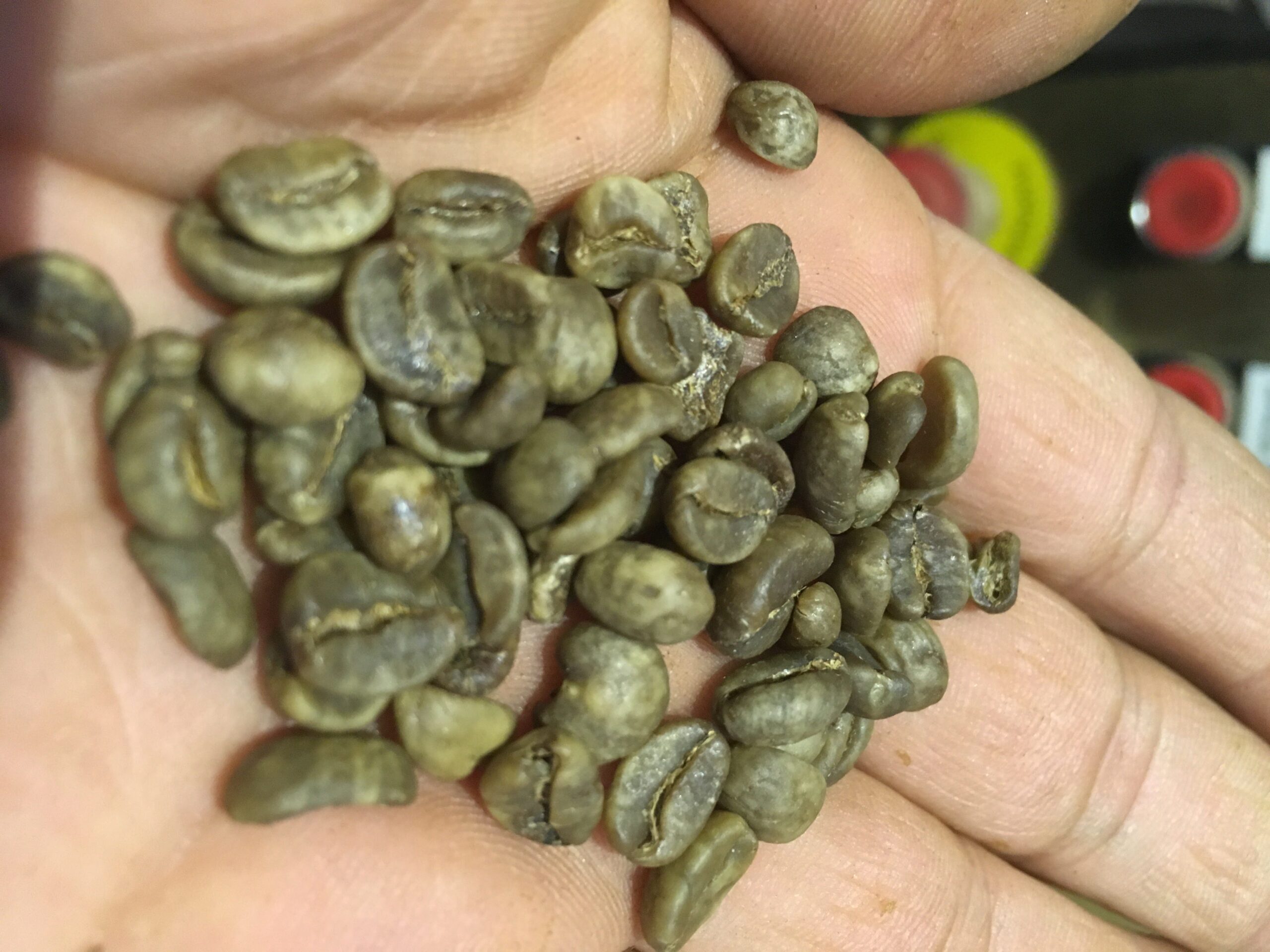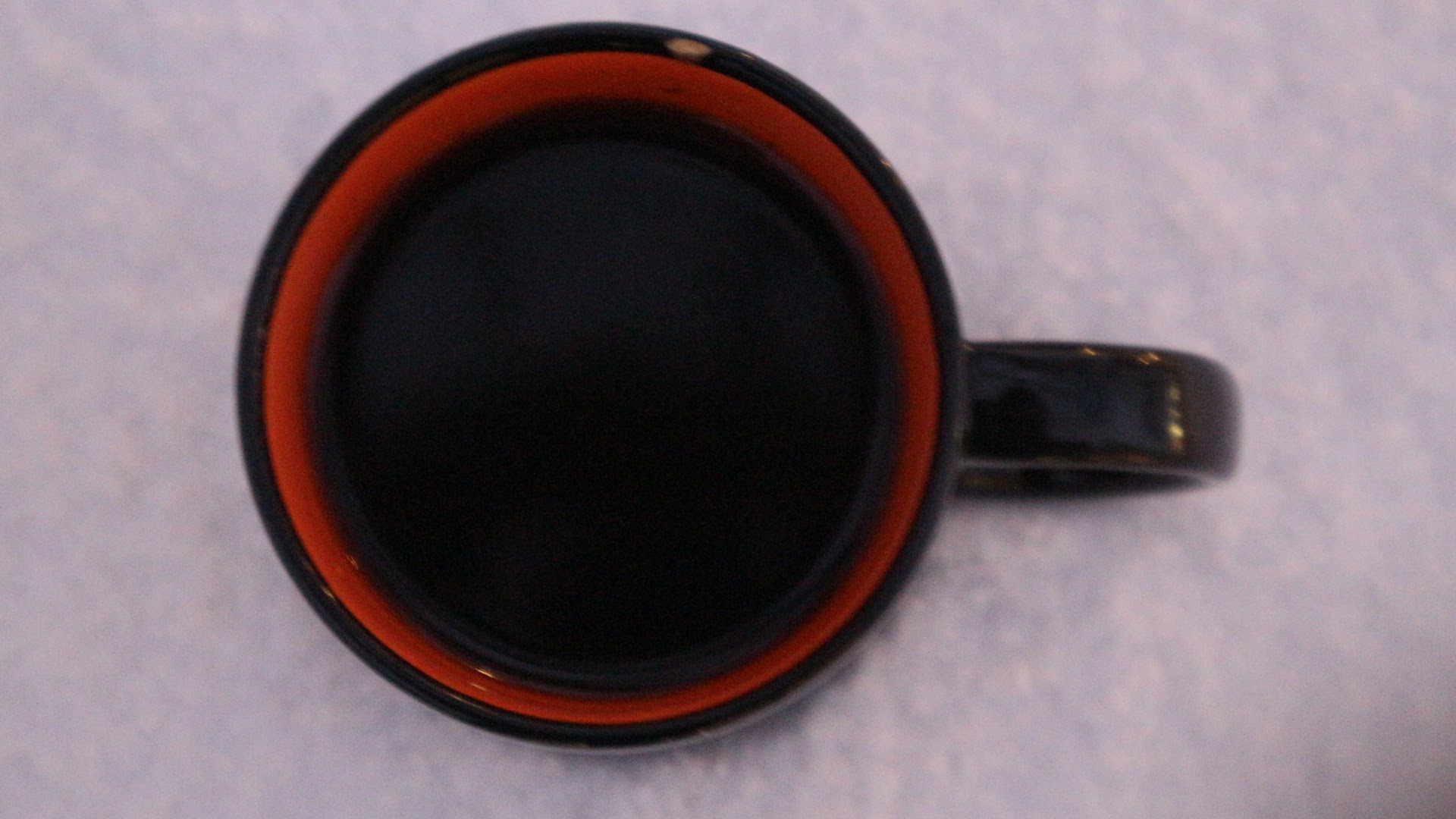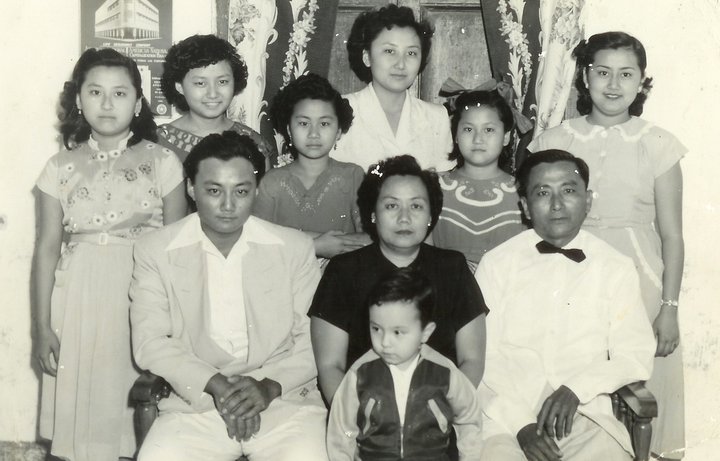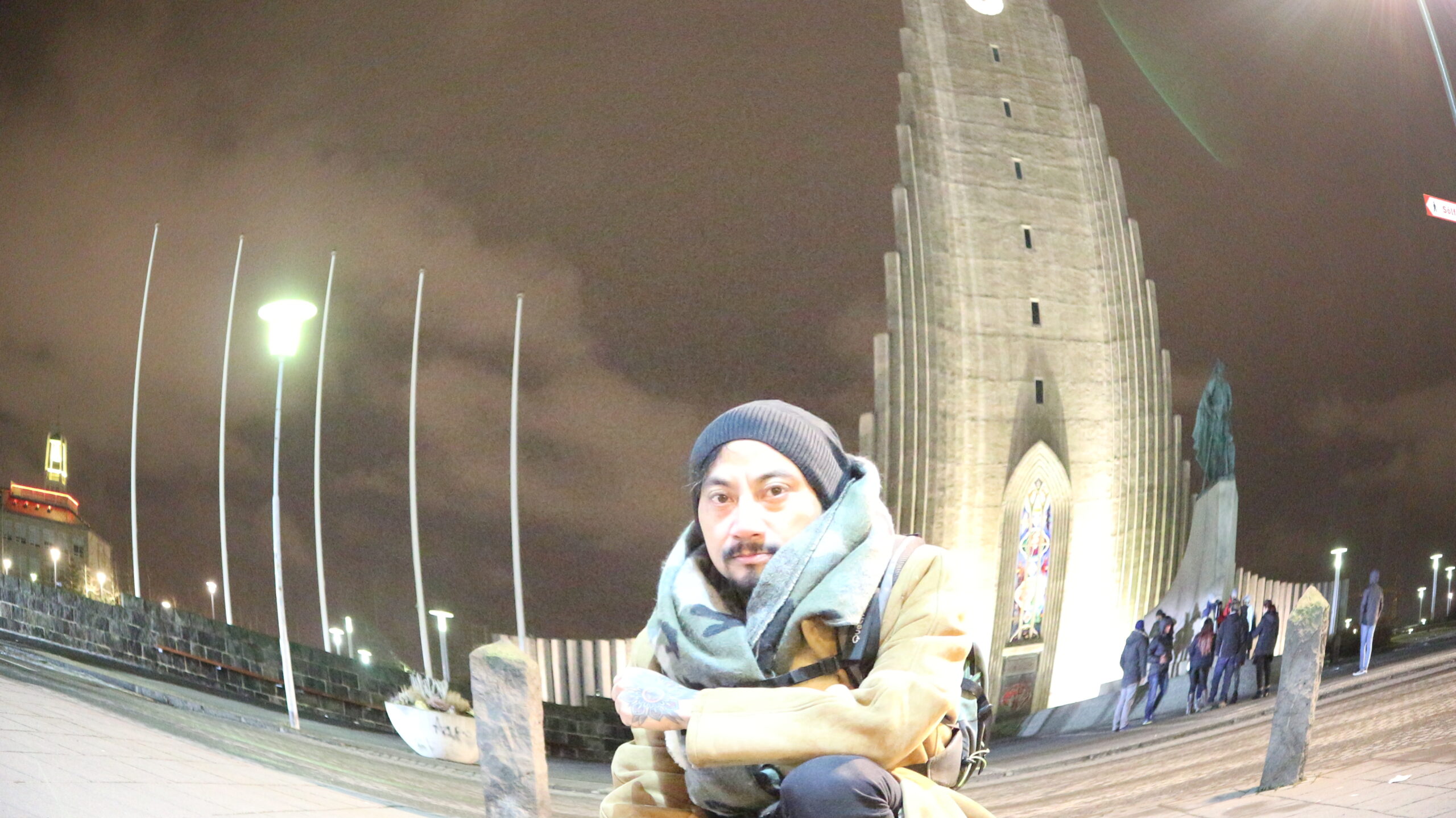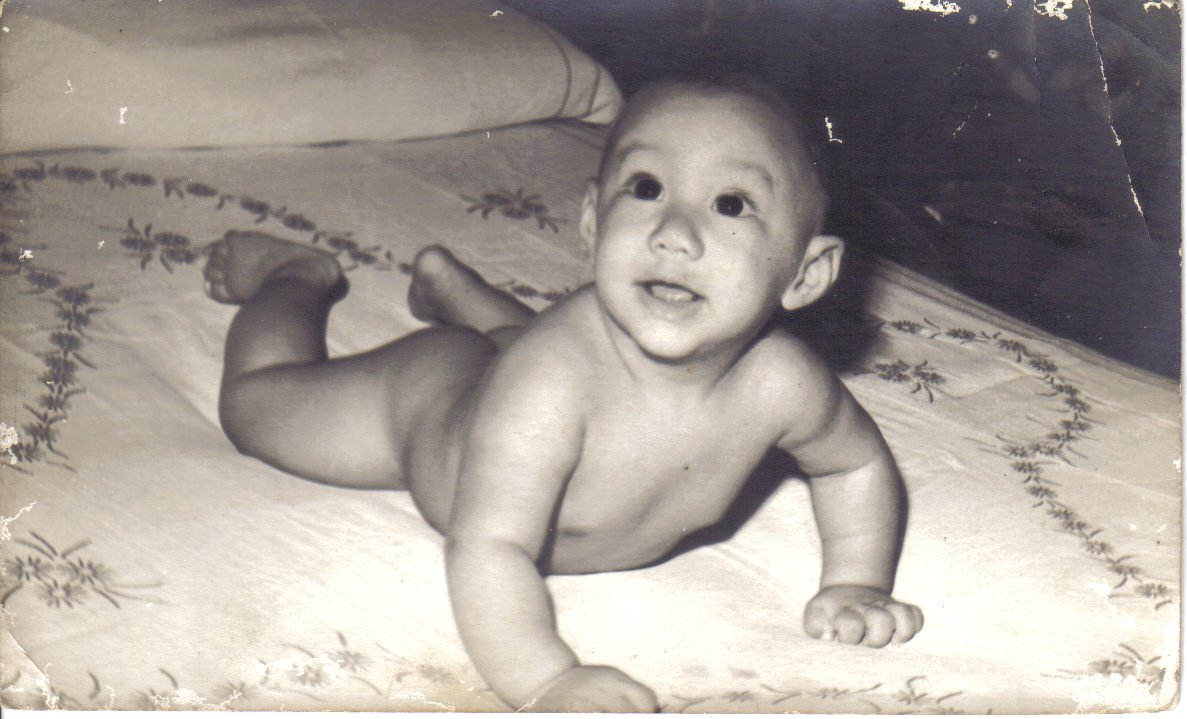Hello Summer!
junio 13, 2018The Travelling BaristaÍsland,Summer in Iceland,Valdís,Fishermen days,Grandi Mathöll,Iceland,Icelandic tattoo covention
The summer has come to Iceland, finally!
And now is daylight 24h although there are a few hours that you can’t see the sun.
Back in my memories the remind of the winter days are fading away. The dark, lonely, cold and long winter touched me so deeply ….
But now is summer and of course is a different kind of.
Sunny days are a precious treasure and within my friends circle we started to call this city “Greykjavík”.
As the others, Nordic countries is time to be outside and enjoy of the season, and the city of Reykjavík could not be less.
We started June with the Icelandic Tattoo Convention organized by Reykjavík Ink.
And I get two new...
by Jennifer Lynn
by Melissa Baker
Fisherman's days in the old harbour.
The first weekend of June is celebrated the fisherman's day by the harbour with games for kids, live music and entertainment for families.
Also, you can see the catch of the day!!
The opening of Grandi Mathöll.
The food halls are a "new" trend that it's happening in every city, halfway between gourmet markets and entertainment centres, has the origin in sud east Asia and under the same roof, restaurants and street food places share the space and tables.

Grandi is the second food hall "Mathöll" in the city of Reykjavík and you can find Asian food, local food, coffee, wines, beer and a fantastic view of the city from the harbour!
Valdís, the ice cream. This is an ice cream shop that you can not miss in your trip to Iceland!
Ahead there is a lot to come, all the towns days, Secret Solstice Festival, Westman Island Festival and more and more of events that names end in FESTIVAL!!
Thanks for reading this few lines and see you in the next post, Salzburg a fairytale city!
¡El verano ha llegado a Islandia, finalmente!
Ahora es de día 24h aunque hay algunas horas en las que no puedes ver el sol.
De vuelta en mis recuerdos, el recuerdo de los días de invierno se está desvaneciendo. El invierno oscuro, solitario, frío y largo que me conmovió profundamente ...
Pero ahora es verano y, por supuesto, aunque es un otro tipo diferente de verano.
Los días soleados son un tesoro precioso y dentro del círculo de mis amigos comenzamos a llamar a esta ciudad "Greykjavík", pues desde que el verano comenzó solo ha hecho que llover y llover.
Como los demás países nórdicos es el momento de estar afuera y disfrutar de la temporada, y la ciudad de Reikiavik no podría ser menos.
Comenzamos el mes de Junio con la Convención del Tatuajes de Islandia organizada por Reykjavík Ink.
Los días de los pescadores en el puerto viejo.
La inauguración de Grandi Mathöll.
Y el tradicional helado de Valdís.
¡Después vendrán todos los días de las ciudades, Secret Solstice Festival, Westman Island Festival y más y más eventos que terminan en FESTIVAL!
Gracias por leer estas líneas y nos vemos en el próximo post, ¡Salzburgo, la ciudad de cuento de hadas!
One World, many ways to have coffee!
mayo 22, 2018Coffeerecetas,recipes,barista,cafe,coffee,barista world
Since I am in Iceland, I have become more aware of how small the world has become and the importance that coffee has in it. Iceland, that small country in the northern hemisphere, nobody knew about it except for the volcanoes, their more international musicians (Björk and Sigur Rós) and those impressive landscapes.
Nowadays this great island is a travel destiny for people from all over the world as tourists or as workers.
But returning to the topic of this blog, coffee, all this influx of people enriches me with the little talks I have and learn a little more about the habits and ways of drinking coffee as well as the way they are called.
I have also found that each time the coffee is gaining ground to the other most drink infusion, the tea. In countries such as the United Kingdom, Australia, China, Taiwan, Japan and Korea, among others, the youngest are responsible for the change of trend.
Some things that I have learned ...
Central European countries usually add the name cafe to: cafe espresso, cafe cappuccino, cafe latte, cafe mocha, etc.
The many names of traditional filter coffee: black coffee, white coffee (with milk), drip coffee and filter coffee.
India and Pakistan love very hot drinks.
Americans always ask for sizes of "cups to go" and they love the "Gibson", latte with three loads of espresso.
As you can see, the experience is very enriching both personally and professionally and I am happy to share with all of you.
See you soon Coffeelovers!
My other media
https://www.instagram.com/coffeeloversby/
https://www.facebook.com/coffeeloversby/
Desde que estoy en Islandia más me doy cuenta de lo pequeño que se ha hecho el mundo y la importancia que el café tiene en el mismo. Islandia, ese pequeño país en el hemisferio norte, del que nadie sabía nada excepto por sus volcanes, sus músicos más internacionales (Björk y Sigur Rós) y sus impresionantes paisajes.
Hoy en día esta gran isla es destino obligado para gentes de todo el mundo tanto como turistas o como trabajadores.
Pero volviendo al tema de este blog, el café, toda esta afluencia de personas me enriquece con las pequeñas charlas que voy teniendo y aprendo un poco más de las costumbres y formas de tomar café en otras partes del mundo.
También he comprobado que cada vez el café va ganando terreno a la otra infusión más bebida, el té. En países como Reino Unido, Australia, China, Taiwán, Japón y Corea, entre otros, son los más jóvenes los encargados del cambio de tendencia.
Algunas cosillas que he aprendido….
Países centroeuropeos suelen añadir el nombre café a: café espresso, café cappuccino, café latte, café mocha, etc..
Los muchos nombres del café de filtro tradicional: black coffee, white coffee (con leche), drip coffee y filter coffee.
India y Pakistán les encanta las bebidas muy calientes.
Los estadounidenses preguntan siempre por tamaños de “cups to go” y les encanta el “Gibson”, latte con tres cargas de espresso.
Como podéis comprobar la experiencia está siendo muy enriquecedora tanto en lo personal como en lo profesional y yo estoy encantado de compartir con todos vosotros.
Hasta la próxima Coffeelovers!
My other media
https://www.instagram.com/coffeeloversby/
https://www.facebook.com/coffeeloversby/
How to ... Matcha Tea
abril 16, 2018How to...drinks,matcha tea
My first impression of drinking matcha was unexpected. I thought that when drinking the whole leaf the result would be a bitter drink but on the contrary I found myself with a sweet drink with a subtle flavor.
The matcha tea combines very well with different types of milk and can be used in pastries and smoothies.
Spanish below ↓↓↓
COFFEELOVERS #5 The Soul Kitchen
abril 5, 2018Videosthe soul kitchen,estrella michelin,pamplona,cocina,restaurante
English below
Me cuelo en la cocina de un restaurante con una estrella Michelin, el Hotel Restaurante Europa, en pleno centro de Pamplona. Pilar Idoate y sus hermanos regentan esta casa donde compartí los momentos previos al servicio.
Visita el blog para saber más: http://blog.coffeelovers.es/restaurant...
Gracias al Restaurante Europa: http://www.hreuropa.com
I visited the kitchen of a restaurant with a Michelin star, the Hotel Restaurante Europa, right in the center of Pamplona. Pilar Idoate and her brothers run this house where I shared the moments before the service.
Visit the blog to know more: http://blog.coffeelovers.es/restaurant...
Greetings to Europa restaurant: http://www.hreuropa.com
https://youtu.be/eiIaf6yNBjo
Subscribe to my channel and don't forget to follow in my other media:
Blog: http://blog.coffeelovers.es
Insta: https://www.instagram.com/coffeeloversby
Face: https://www.facebook.com/coffeeloversby
Twitter: https://twitter.com/coffeeloversby
Write me to know more: hello@coffeelovers.es
Music:
Cute and Jazzy French by Bensound www.bensound.com
Road to Moscow by Jingle Punks
Restaurant Europa the Soul Kitchen in Pamplona
abril 2, 2018The Travelling Baristapamplona,reino de navarra,cafe,estrella michelin,hotel europa pamplona,navarra
The kitchen is that part of the house where the family gathers and chatting in the heat of the stove while the stews are cooking
Decaffeination Processes
marzo 11, 2018Did you know?extracción de cafeina,cafe,coffee,decaf,decaffeination
Decaffeination: Is the removal of caffeine from coffee beans, cocoa, tea leaves and other caffeine containing materials.
Caffeine: Is a central nervous system stimulant of the methylxanthine class and it is the most consumed psychoactive drug. The most prominent effect of the caffeine is prevent the onset of drowsiness induced by adenosine.
Caffeine is a bitter, white crystalline purine and a methylxanthine that is found in the seeds, nuts or leaves of a number of plants native to South America and East Asia that helps to protect them against predator insects and to prevent germination of nearby seeds.
Caffeine occurs in coffee naturally and any of this four ways of decaffeination are unnatural.
Coffee is always decaffeinated in it’s green state.
Caffeine is a water soluble substance and water is used in the four processes.
Water is not a selective solvent therefore removes other soluble substances like sugars, proteins as well as caffeine.
All decaffeination processes use a decaffeinating agent to help to speed up the process and minimize the effect that water alone would have on the taste.
Indirect solvent-based process.
As solvent can be Methylene Chloride (U.S.A.) or Dichloromethane (E.U.) or Ethyl Acetate.
Beans are soaked in near boiling water for several hours which extracts the caffeine as well as others flavor elements and oils.
The water is separated and transferred to another tank were the beans are and washed about 10 hours with any of the solvents above. The molecules of the chemical solvent selectively bend with the molecules of caffeine and the resulting mixture is then heated to evaporate the solvent and caffeine, after the beans are reintroducing to the liquid to reabsorb most of the coffee oils and flavours.
Direct solvent-based process.
The beans are steamed for about 30 minutes to open their pores. Once they are ready for the solvent they are repeatedly rinse with either of the solvents of the Indirect solvent-process for about 10 hours to remove the caffeine. Then the solvent with the caffeine is drained away and the beans are steamed again to remove any residual solvent.
Swiss water process.
This process uses two concepts, solubility and osmosis, to decaffeinate coffee beans.
Beans are soaked in hot water to dissolve the caffeine and the flavours. Then the water is drawn out and passed through an activated charcoal filter which only capture the caffeine molecules, allowing oil and flavor molecules to pass through it.
Ends with beans without caffeine and flavor, that are discarded, and water full of flavors.
Now we soaked a new batch of green coffee with the water full of flavor and no caffeine (green coffee extract) and this time only caffeine moves from coffee beans to the water.
Results is decaffeination without a massive less of flavor but with higher selling price.
CO₂ process.
Uses liquid CO₂ in place of chemical solvents. It acts only in caffeine and releases only the alkaloid and nothing else.
Water soaked coffee beans are placed in a stainless steel container and sealed. Liquid CO₂ is forced into the coffee at pressures of 1.000psi (68’95 bars) drawing out the caffeine, then is transferred to another container where the pressure is released and the CO₂ returns to gaseous state, leaving the caffeine behind.
How to... Red Eye, Black Eye and Dead Eye.
febrero 14, 2018How to...recetas de cafe,red eye,black eye,coffee recipes,dead eye,How to make
**Español abajo**
Red Eye Black Eye Dead Eye
The other day came to the coffee house some tourist from E.E.U.U. and they asked for a Red Eye!
Imagine my face! What? Red eye?
In this situations two life lessons comes to my mind, one from my Dad and the other from Vicente Castillo and his professionalism teachings.
Better be ignorant one time than whole life.
Be humble and tell customer that you don’t know how to prepare the drink and ask nicely if is willing to teach you.
So, after my surprise face I apologize myself for my ignorance about the drink and how to prepare, they smile and they taught me how to do it!
The base of this three drinks is a filter coffee
Now we go back to the post subject!
Red Eye is filter coffee + one espresso.
Black Eye is filter coffee + two espresso.
Dead Eye is filter coffee + three espresso.
Red Eye Black Eye Dead Eye
El otro día llegó a la cafetería un turista de E.E.U.U. ¡y pidieron un Red Eye!
¡Imagina mi cara! ¿Qué? ¿Red Eye?
En esta situación vienen a mi mente dos lecciones de vida, una de mi papá y otra de Vicente Castillo y sus enseñanzas de profesionalismo.
Mejor ser ignorante una vez que toda la vida, lección de papá.
Sé humilde y dile al cliente que no sabes cómo preparar la bebida y pregunta amablemente si está dispuesto a enseñarte, lección de Vicente Castillo.
Entonces, después de mi sorpresa, me disculpo por mi ignorancia sobre la bebida y cómo prepararla, a lo que el cliente sonríe y me enseñaron a hacerlo!
La base de estas tres bebidas es un café de filtro, en su defecto podemos usar un americano.
¡Ahora volvamos al tema!
Red Eye es un café de filtro + un espresso.
Black Eye es un café de filtro + dos espresso.
Dead Eye es un café de filtro + tres espresso.
ABOUT MYSELF - A family history II
febrero 6, 2018The Travelling Barista
It was in 1905 when a colony of more than a thousand Koreans embarked upon a journey of no return.
They left the Korean peninsula in search of a better life, work and prosperity.
At that time Korea was a single country and so it was until the end of the Korean War (1950 -1953) that within the United Nations, the U.S.S.R. and E.E.U.U. decided to divide the country by the 38th parallel.
The destiny was Mexico and they embarked only a few years before the Japanese occupation of Korea (1910 - 1953). Among the lucky ones were my great-grandparents. I say "lucky" because I am sure that the hardships suffered in the trip and hard work in Mexico are not comparable to the savage atrocities of the Japanese occupation.
Already in Mexico they settled in the Yucatan Peninsula and that's where my grandparents Antonio Lee Choi and Juana Kim Kim were born. I do not have much information of this time, only the oral tradition and the information that I have been able to find on the Internet.
A part of the colony was established in Mexico and today their descendants are still there, but in 1921 three hundred Koreans decide to emigrate again to Cuba, due to the precarious economic situation they had in Mexico, among them my grandmother Juana and my grandfather Antonio. My grandparents settled down along with other Koreans in the region of Matanzas, where there were plantations of Henequen, plant of the family of the Agave originating from the Yucatan peninsula and of which fiber is used to make rope among other things and thanks to the years worked in Yucatan became trained specialists in the cut and management labor.
In Cuba, this Korean community flourished which, like all Asian communities, focused on hard working, going unnoticed and raising their families.
The Koreans, like the rest of Asians, are distributed in small communities led by a leader, in the case of my family the leader was Ernesto Lim Yo and his wife Gudelia Kim Pak, this happens approximately during the first three generations, being the third one that begins to be integrated in the host country and emerges from the old customs.
My grandparents along with other Koreans lived in the El Bolo farm in Matanzas and there my father was born, Antonio in 1935, being the oldest of seven children, Luisa, Teresa, Hilda, Juanita, Delia and Cecilia. Although the names are very Spanish, they all have their Korean names which, in the case of my father, were forgotten due to disuse.
When my father was born in 1935, Fulgencio Batista had a year in the Cuban government and although Cuba was a prosperous nation the reality is that the wealth was only a few and the population lived in absolute poverty, this was accentuated in the decade of the 50's with the arrival of the mafia, casinos, prostitution, drug trafficking and the corruption that all this generates.
According to my father, La Havana in those years became the brothel of the United States.
What led my father to turn his life as a farmer with only 20 years was an incident involving US Marines on March 11, 1949 and the passivity of the Cuban government. These marines desecrated the monument to José Martí, a Cuban poet and hero.
From this point until our trip to Spain in January 1980 there is a blank of information and I can tell you only the main lines. My father's silence about what happened during the revolution, his complicated relationship with his father and later years is something that we always respects.
If I had to describe my father I would say that he was very strict, prudent, elegant and cultured in many fields such as mathematics, physics, chemistry, geography and international politics as well as languages such English, French, Spanish and Korean.
I always imagined that this was the level of education of the average cuban population, nothing could be further from reality!
A few years ago, before dying, during a family reunion, he made a confession that provoked the tears on my mother's face, tears of rest, release of a very heavy burden that the two of them carried in secret for more than 30 years.
My father's story telling started like this "It's been 30 years and everything I could know has prescribed ..."
He told us, without going into many details, that during the Revolution he carried out sabotage work on telegraph lines and put bombs on the railway lines, facts that caught the attention of the North Korean Secret Services and led to the recruitment of my father and later training as a spy in Russia and North Korea.
I remember that he always spoke that on a “cultural exchange” trip between Cuba and Korea, he visited the Red Square in Moscow ...
On his return to Cuba he became part of the North Korean embassy in Havana as a diplomatic attaché. For his relatives, he worked in a chemical plant far from them. All the photos we keep of him and his "coworkers" in that chemical plant turns out to be false photos to send to the family during extended absences.
One of my father's missions was to marry a woman who had a "clean" passport to travel to Canada, once there to leave her and "marry" another Korean spy and from there enter the United States. At that time my mother was a great activist of the revolution, with a militant father of the International Socialist and most importantly with a Spanish passport! The necessary ingredients for the Korean secret services to offering my mother a job as my father's secretary and how not!
My mother fell in love with that handsome and elegant Korean. They got married, but the unexpected happened, my father also fell in love and had children, which complicated the mission of my father.
Then with the death of Franco, the dictator who ruled Spain from 1939 to 1975, my mother begins, secretly, the repatriation proceedings to Spain. My mother, strong woman, fighter and with a lot of character, so much that it took her to many discussions with the members of the Korean intelligence and with my father, to the point of putting an ultimatum
I'm going to take that flight, with you or without you but with my children
Over the years, my father returned to Cuba to see his mother for the last time, when he arrived at the airport in La Havana was kidnapped for 3 days, tortured and interrogated.
He never wanted to know anymore about Cuba ......
Fue en el año 1905 cuando una colonia de más de mil coreanos se embarcaron en un viaje sin retorno.
Abandonaron la península de Corea en busca de una vida mejor, trabajo y prosperidad.
Por aquel entonces Corea era un solo país y así lo fue hasta el fin de la Guerra de Corea (1950 -1953) que en el seno de las Naciones Unidas la U.S.S.R. y E.E.U.U. decidieron dividir el país por el paralelo 38º.
El destino del viaje de la colonia coreana fue México y quiso el destino que se embarcaran tan solo unos años antes de la ocupación Japonesa de Corea (1910 - 1953). Entre los afortunados estaban mis bisabuelos. Digo “afortunados” porque estoy seguro que las penurias que sufrieron en el viaje y el trabajo duro en México, no son comparables con las salvajes atrocidades de la ocupación Japonesa.
Ya en México se asentaron en la Península de Yucatán y allí es donde nacieron mis abuelos Antonio Lee Choi y Juana Kim Kim. No dispongo de mucha información de esta época, tan solo la tradición oral y la información que he podido encontrar en Internet.
Una parte de la colonia se estableció en México y hoy en día siguen allí sus descendientes, pero en 1921 trescientos coreanos deciden volver a emigrar debido a la precaria situación económica que tenían en México, entre ellos mi abuela Juana y mi abuelo Antonio.
Mis abuelos se establecen junto con otros coreanos en la región de Matanzas, donde había plantaciones de Henequén, planta de la familia de los Agave originario de la península de Yucatán y del cual se usa la fibra para hacer cuerda entre otras cosas. Gracias a los años trabajados en Yucatán se convirtieron en especialistas en su corte y manufactura.
En Cuba floreció esta comunidad coreana que al igual que todas las comunidades asiáticas se centró en trabajar duro, pasar desapercibida, prosperar y criar a sus familias.
Los coreanos, al igual que el resto de asiáticos, se distribuyen en pequeñas comunidades guiadas por un líder, en el caso de mi familia el líder era Ernesto Lim Yo y su esposa Gudelia Kim Pak, esto sucede aproximadamente durante las tres primeras generaciones, siendo la tercera la que comienza a integrarse en el país de acogida y se desprende de las viejas costumbres.
Mis abuelos junto con otros coreanos vivieron en la finca El Bolo, en Matanzas y allí nació mi padre, Antonio en el año 1935 siendo el mayor de siete hijos, Luisa, Teresa, Hilda, Juanita, Delia y Cecilia. Aunque los nombres son muy españoles todos ellos tienen sus nombres coreanos, que en el caso de mi padre se olvido por desuso.
Cuando mi padre nació en el año 1935, Fulgencio Batista llevaba un año en el gobierno cubano y aunque Cuba era una nación prospera la realidad es que la riqueza era solo de unos pocos y la población vivía en la más absoluta miseria, esto se acentuó en la década de los 50’s con la llegada de la mafia, los casinos, la prostitución, el tráfico de drogas y la corrupción que todo ello genera.
Según mi padre La Habana en aquellos años se convirtió en el burdel de los Estados Unidos.
Lo que llevo a mi padre a dar un giro a su vida de campesino con tan solo 20 años fue un incidente protagonizado por marines estadounidenses un 11 de Marzo de 1949 y la pasividad del gobierno cubano. Estos marines profanaron el monumento a José Martí, poeta y héroe cubano.
Desde este punto hasta nuestro viaje a España en Enero de 1980 es todo un vacio del que poco se y poco os puedo contar salvo las líneas principales. El silencio de mi padre sobre lo sucedido durante revolución, su relación complicada con su padre y los años posteriores es algo que siempre respete.
Si tuviese que describir a mi padre diría que era muy estricto, prudente, elegante y culto en muchos campos como las matemáticas, física, química, geografía y política internacional, además de hablar y escribir ingles, frances, español y coreano.
Siempre imaginé que ese era el nivel de educación del cubano medio, ¡nada más lejos de la realidad!
Pocos años antes de morir, durante una reunión familiar, nos hizo una confesión que provocó las lágrimas en el rostro de mi madre, lágrimas de descanso, de liberación de una carga muy pesada que llevaron los dos en secreto durante más de 30 años.
El relato de mi padre comenzó así “Han pasado 30 años y todo lo que podría saber, de valor, ha prescrito …”
Nos contó, sin entrar en muchos detalles, que durante la Revolución realizo labores de sabotaje en tendidos de telégrafos y poniendo bombas en las líneas de ferrocarril, hechos que llamaron la atención de los Servicios Secretos norcoreanos y que llevaron al reclutamiento de mi padre y posterior entrenamiento como espía en Rusia y Corea del Norte.
Recuerdo que siempre hablaba que en un viaje de intercambio cultural entre Cuba y Corea, visitó la Plaza Roja en Moscú...
A su vuelta a Cuba pasó a formar parte de la embajada de Corea del Norte en La Habana como agregado diplomático. Para sus padres y hermanas, mi padre, trabajaba en una planta química y lejos de la familia. Todas las fotos que conservamos de él y sus “compañeros” en esa planta química resulta que son montajes, fotos falsas para enviar a la familia durante las ausencias prolongadas.
En esta etapa mis padres se conocieron. Una de las misiones de mi padre era contraer matrimonio con una mujer que tuviese un pasaporte “limpio” para viajar a Canadá, una vez allí abandonarla y “casarse” con otra espia coreana y desde allí entrar en los Estados Unidos. En aquel entonces mi madre era una gran activista de la revolución, con un padre militante de la Internacional Socialista y lo más importante ¡con pasaporte español! Los ingredientes necesarios para que la maquinaria se pusiese en marcha ofreciendo a mi madre un trabajo como secretaria de mi padre.
Y como no mi madre se enamoro de ese guapo y elegante coreano. Se casaron, pero sucedió lo inesperado, mi padre también se enamoró y tuvieron hijos, lo que complicaba la misión de mi padre.
Entonces con la muerte de Franco, el dictador que gobernó España desde 1939 hasta 1975, mi madre comienza, en secreto, los trámites de repatriación a España.
Mi madre, mujer fuerte, luchadora y con mucho carácter, tanto que le llevó a muchas discusiones con los miembros de la inteligencia coreana y con mi padre, hasta el punto de ponerle un ultimatum
Voy a coger ese avión, contigo o sin ti, pero con mis hijos
Y así fue como un 20 de Enero de 1980 llegamos a Madrid, Barajas.
Con los años mi padre volvió a Cuba para ver por última vez a su madre, cuando llego al aeropuerto en La Habana lo secuestraron por 3 días, lo torturaron e interrogaron.
Ya, nunca más, quiso saber de Cuba …...
Reykjavik Winter Lights Festival│Quality Espresso│Reykjavik Cocktail Weekend
febrero 5, 2018The Travelling Baristaquality espresso,reykjavik cocktail weekend,reykyavik,winter lights festival
February as come, darkness fade away and grow the activity in the city of Reykjavik!
The Winter Lights Festival “Vetrar Hátíð”
An annual event to stimulate the city when the Christmas has gone and the dark days still among us. The festival celebrate along the capital area both the winter days and the growing light after a long period of darkness. The program is a mixture of arts, sports and culture for locals and visitors where you can enjoy “free of charge” of Museums, swimming pools, Reykjavik sky resort among other activities.
To know more Vetrar Hátíð
The Reykjavík Cocktail Weekend
Alongside the Winter Lights Festival is running is an event that the Barents Club of Iceland organizes annually in the center of the city of Reykjavík, in collaboration with many restaurants and entertainment venues in the city.
Facebook Reykjavík Cocktail Weekend
And I can not miss the coffee!
Quality Espresso
A coffee machines builder based in Barcelona, Spain, was present in the fair UTmessan at Harpa, an event where all the biggest IT companies in Iceland take part by the hand of Vodafone and the coffees of Kaffitár to introducing the concept of Internet of Things applied to the world of coffee. Quality Espresso launched to the market, two years ago, the first coffee machine connected to the cloud.
More info here
En español: https://youtu.be/Tc-sI03reaE
En inglés: https://youtu.be/kzCr3J0H-Lc
Visit Quality Espresso
 As you can see I can not get bored!
As you can see I can not get bored!
Leave your comments below and follow Coffee Lovers.
ABOUT MY SELF - A family history I
enero 29, 2018The Travelling Barista
And the universe decided the time and place.
January 15 1974 10am in a taxi cab back seat.
La Havana, Cuba.
The last of four siblings: Volga, Coral, Tony and Amilka.
Many people ask me about the origin of my name and many times I do not know what to say, because the universe decided….again!
My parents wanted, Amilcar, the name of the Carthaginian general who, along with Hannibal, conquered half the known world ... ... But the civil registry lord sentenced, Amilka Javier, Lee Gamiz!
My parents, Antonio, Lee Kim and Coral Letonia, Gamiz Ibañez, gifted us with this awesomest families names, Lee and Gamiz, which history we will leave for later ...
The memories I have of my childhood in Cuba are few, confusing and very romantic ... My mother cleaning the house of spirits with a cigar and rum, the smell of storms, the fear that lightning gives me, the blackouts, fireworks and the wet streets, the "durofrios", the light from the lighthouse that I saw from the balcony, the workshop under the house, the stream behind the house, the smell of mango, the papaya and the tamarinds, the house of Halmoni ( 할머니) / Grandmama Juana, the military barracks in Matanzas, Uncle Ten-sen and her Guajiro hat, chew sugar cane, the fried bananas, the beach of Varadero and its multicolored crabs, run naked on all sides, the peanuts, cleaning the rice of beetles on the kitchen table, while listened to my mother sing "Ay Mama Inés, all the blacks drinks coffee", Imilla’s long golden locks ...
Was the paradise for a five years old boy, that one day, 29 January 1980, to be more exact, found himself in a plane to Spain which lands in Madrid, where Aunt Estonia was waiting for us, in a really cold January 30th.
Can you imagine? From the Caribbean Sea to the north of Spain in the middle of winter ... the winter of Zaragoza!
The memories of the months lived in the village of La Cartuja Baja are not very pleasant. Cold, very cold, wet sheets, new school, no friends ... hell.
With the end of the summer of 1980 we changed town for Nuez de Ebro where Dad found work in the care of a pigs farm and also gave us the house.
We had no electricity or drinking water but for me it was a paradise, surrounded by pigs, chickens, ducks, rabbits, turkeys and nature just two kilometers away from the town and at that time there were few cars and the swallows flew very close to the ground.
I remember Grandpa Pablo picking up the garbage from the houses with his horse drawn carriage ...
If I remember correctly in 1984 we moved from the farm to a house in the village and this is where adolescence begins!
The friends, the gang, the star wars movie, the soccer games, on Sundays eating pipes in the bank of the square and something that began to be very important in my life, the music and the bar in the town square El Cafe!
Afternoons and nights listening to the music that Pablito, put on the record player.
Summers, Christmas, Easter and village festivities were something very special.
But all this changed in the school year 88/89 ...
I gave the great leap from the village school to the institute in the city of Zaragoza, bad decisions that made me repeat the course and start looking for a job as a waiter, I was only 16 years old …
To be continue….
El universo decidió el momento y el lugar
15 de Enero del año 1974, 10 am en un taxi.
La Habana, Cuba.
El último de cuatro hermanos: Volga, Coral, Tony y Amilka.
Muchos me preguntan por el origen de mi nombre y muchas veces no se que decir, pues volvió a decidir el universo…
Mis padres querian, Amilcar, nombre del general cartaginés que junto con Aníbal conquistó la mitad del mundo conocido…...Pero el señor del registro civil sentenció, ¡Amilka Javier Lee Gamiz!
Mis padres, Antonio Lee Kim y Coral Letonia Gamiz Ibañez, aportan maravillosos apellidos, Lee y Gamiz, cuya historia dejaremos para más adelante...
Son pocos, confusos y muy románticos los recuerdos que tengo de mi infancia en Cuba...Mi madre limpiando la casa de espiritus con un cigarro y ron, el olor de las tormentas, el miedo que me dan los relámpagos, los apagones, los fuegos artificiales y las calles mojadas, los “durofrios”, la luz del faro que veía desde el balcón, el taller debajo de casa, el arroyo detrás de casa, el olor del mango, la papaya y los tamarindos, la casa de Halmoni (할머니)/Abuela Juana, el cuartel militar en Matanzas, el tio Ten-sen y su sombrero Guajiro, masticar caña de azúcar, los plátanos fritos, la playa de Varadero y sus cangrejos multicolor, correr desnudo por todos lados, los cucuruchos de maní, limpiar el arroz de escarabajos en la mesa de la cocina, a mi madre cantar “Ay Mama Inés, todos los negros tomamos café”, los cabellos dorados de Imilla … El paraíso para un niño de tan solo cinco años, que un buen día, 29 de Enero de 1980, para ser más exactos, se ve metido en un avión de la compañía Iberia, que aterriza en Madrid, donde tia Estonia nos esperaba, un gélido 30 de Enero.
Os imaginais? Del mar caribe al norte de España en mitad del invierno...el invierno de Zaragoza!
No son muy agradables los recuerdos de los meses vividos en el pueblo de La Cartuja Baja. Frio, mucho frio, sabanas húmedas, colegio nuevo, sin amigos… un infierno.
Con la llegada del verano del 80 cambiamos de pueblo, Nuez de Ebro, donde papa encontró trabajo al cuidado de una granja de cerdos y que además nos daban la casa.
No teníamos ni electricidad ni agua potable pero para mi fué un paraiso, rodeado de cerdos, gallinas, patos, conejos, pavos y naturaleza a tan solo dos kilometros del pueblo donde algunas calles eran de tierra, así como la plaza, había pocos coches y las golondrinas volaban muy cerca del suelo.
Recuerdo al abuelo Pablo recoger la basura de las casas con su carro tirado por caballos…..
Si mal no recuerdo en el año 1984 nos trasladamos de la granja a una casa en el pueblo y aquí es donde empieza el cambio de la infancia a la adolescencia!
Los amigos, la pandilla, la guerra de las galaxias, los partidos de futbol, los domingos comiendo pipas en el banco de la plaza y algo que empezó a ser muy importante en mi vida, la música y el bar de la plaza ¡El Café!
Tardes y noches escuchando la música que Pablito nos ponía en el tocadiscos.
Los veranos, las navidades, la semana santa y las fiestas del pueblo fueron algo muy especial.
Pero todo esto cambio en el curso escolar 88/89 …
Di el gran salto de la escuela del pueblo al instituto en la ciudad de Zaragoza, malas decisiones que me hicieron repetir de curso y empezar a buscar trabajo.
Lo encontre de camarero, tenia yo 16 años nada más ….
Continuará….

